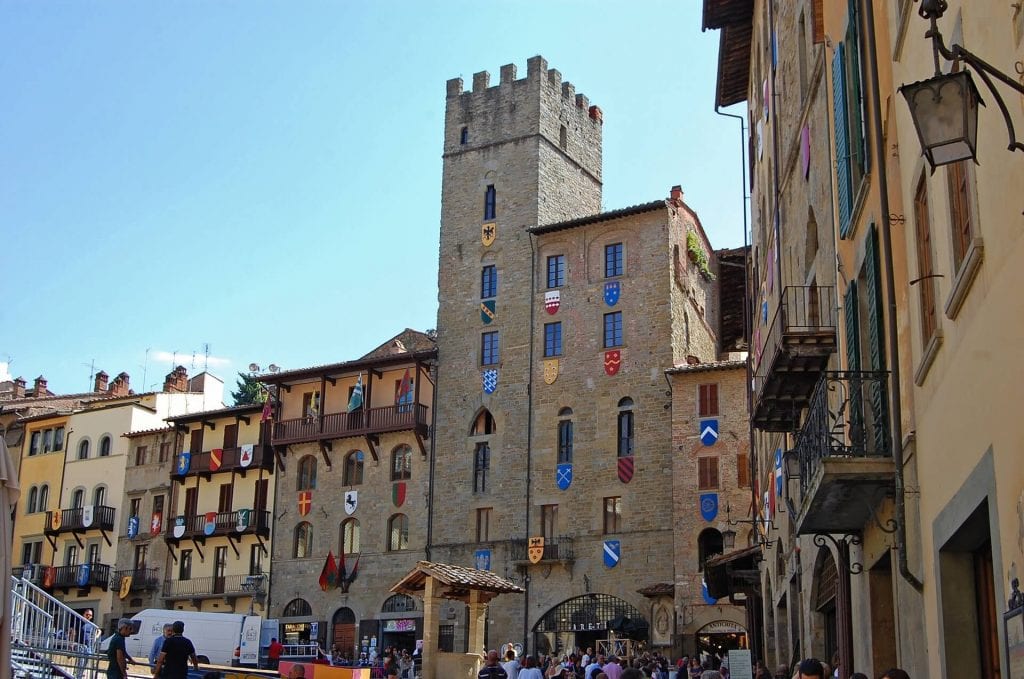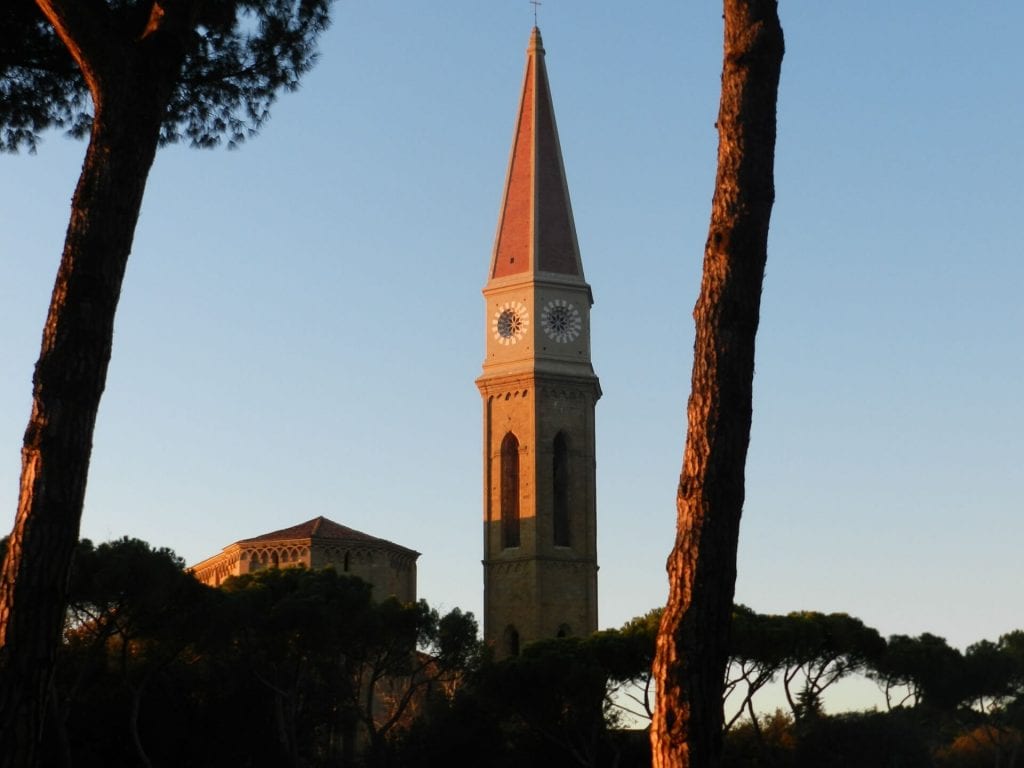Arezzo is about 80 kilometres (50 miles) southeast of Florence at an elevation of 296 metres (971 ft) above sea level.
Described by Livy as one of the Capitae Etruriae (Etruscan capitals), Arezzo (Aritim in Etruscan) is believed to have been one of the twelve most important Etruscan cities—the so-called Dodecapolis, part of the Etruscan League.
Conquered by the Romans in 311 BC, Arretium became a military station on the via Cassia, the road by which Rome expanded into the basin of the Po. Arretium sided with Marius (157 – 86 BC) in the Roman Civil War, and the victorious Sulla (c. 138 – 78 BC) planted a colony of his veterans in the half-demolished city, as Arretium Fidens (“Faithful Arretium”).
The commune of Arezzo threw off the control of its bishop in 1098 and functioned as an independent city-state until 1384. Generally Ghibelline in tendency, it opposed Guelph Florence. In 1252 the city founded its university, the Studium.
Arezzo yielded to Florentine domination in 1384; its individual history became subsumed in that of Florence and of the Medicean Grand Duchy of Tuscany. During this period Piero della Francesca (c. 1415-1492) worked in the church of San Francesco di Arezzo producing the splendid frescoes, recently restored, which are Arezzo’s most famous works. Afterwards the city began an economical and cultural decay, which ensured the preservation of its medieval centre.
City buildings suffered heavy damage during World War II; the Germans made a stand in front of Arezzo early in July 1944 and fierce fighting ensued before the British 6th Armoured Division, assisted by New Zealand troops of the 2nd New Zealand Division, liberated the town 16 July 1944. The Commonwealth War Graves Commission’s Arezzo War Cemetery, where 1,266 men are buried, is located to the north-west of the city.
Main Sights:

- Piazza Grande
The Piazza Grande is the most noteworthy medieval square in the city, opening behind the 13th century Romanesque apse of Santa Maria della Pieve. Once the main marketplace of the city, it is currently the site of the Giostra del Saracino (“Joust of the Saracen”). It has a sloping pavement in red brick with limestone geometrical lines. Aside from the apse of the church, other landmarks of the square include:
- The Palace of the Lay Fraternity (Fraternita dei Laici): 14th–15th century palazzo, with a Gothic ground floor and a quattrocento second floor by Bernardo Rossellino.
- The Vasari Loggia along the north side, a flat Mannerist façade designed by Giorgio Vasari.
- Episcopal Palace, seat of the bishops, rebuilt in the mid-13th century. The interior has frescoes by Salvi Castellucci, Teofilo Torri and Pietro Benvenuti. In front of the Palace is the Monument to Grand Duke Ferdinando I de’ Medici (1595), by Pietro Francavilla, following a design of Giambologna.
Churches
- Santa Maria della Pieve: The most striking feature of this Romanesque church is the massive, square-planned bell tower with double orders of mullioned windows.
The church was built in the 12th century over a pre-existing Palaeo-Christian edifice, and was renovated a century later with the addition of the characteristic façade made of loggias with small arches surmounted by all different-styled columns. Also from the same century is the lunette with the Virgin between Two Angels and the sculptures of the months (1216) over the main portal. the interior has a nave and two aisles, with a transept also added in the 13th century.
In the following century chapels, niches and frescoes were added, including the polyptych of Virgin with Child and Saints by Pietro Lorenzetti (1320). In the crypt is a relic bust of St. Donatus (1346). From the same epoch is the hexagonal baptismal font, with panels of the Histories of St. John the Baptist, by Giovanni d’Agostino. The Pieve was again renovated by Giorgio Vasari in 1560.
- Cathedral of Saint Donatus (13th – early 16th centuries): The façade of this Gothic style church remained unfinished, and was added in the 20th century. The interior has a nave and aisles divided by massive pilasters. The left aisle has a fresco by Piero della Francesca portraying the Madeleine. Noteworthy are also the medieval stained glass, the Tarlati Chapel (1334) and the Gothic tomb of Pope Gregory X.
- Basilica of San Francesco (13th–14th centuries): Built in Tuscan-Gothic style. Of the projected façade cover in sculpted stone only the lower band was completed. The interior has a single nave: the main attraction is the History of the True Cross fresco (1453–1464) cycle by Piero della Francesca in the Bacci Chapel. Under the church is another Basilica with a nave and two aisles (Basilica inferiore), today used for art exhibitions.
- Basilica of San Domenico (founded in 1275 and completed in the early 14th century): The interior has a single nave with a Crucifix by Cimabue, a masterwork of 13th-century Italian art. Other artworks include a Sts. Philip and James the Younger and St. Catherine by Spinello Aretino and other 14th century painting and sculpture decorations.



